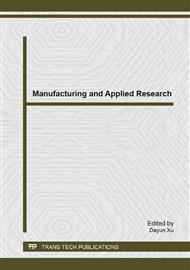p.375
p.379
p.386
p.391
p.397
p.405
p.410
p.418
p.423
Reliability Programmed Tool and its Application for Fault Tolerance Computation
Abstract:
With the continuous scaling of CMOS technology, reliability of nanobased electronic circuits is endlessly becoming a major concern. Due to this phenomenon, several computational approaches have been developed for the reliability assessment of modern logic integrated circuits. However, these analytical methodologies have a computational complexity that increases exponentially with the circuit dimension, making the whole reliability assessment process of large circuits becoming very time consuming and intractable. Therefore, to speed up the reliability assessment of large circuits, this paper firstly looks into the development of a programmed reliability tool. The Matlab-based tool is developed based on the generalization of Probabilistic Transfer Matrix (PTM) model as one of the existing reliability assessment approaches. Users have to provide description of the desired circuit in the form of Netlist that becomes the input to the programmed tool. For illustration purpose, in this paper, C17 has been used as the benchmark test circuit for its reliability computation. Secondly, reliability of a desired circuit does not only depend on its faulty gates, but it also depends on the maximum error threshold of these faulty gates above which no reliable computation is possible. For this purpose, the developed tool is employed again to find the exact error thresholds for faulty gates.
Info:
Periodical:
Pages:
397-404
Citation:
Online since:
March 2014
Authors:
Price:
Сopyright:
© 2014 Trans Tech Publications Ltd. All Rights Reserved
Share:
Citation:


